キャプティブ 2021.02.12
CA 23 ロイズに設立するキャプティブ Captives to be established at Lloyd’s of London
目次
For those who prefer to read this column in English, the Japanese text is followed by a British English translation, so please scroll down to the bottom of the Japanese text.
分厚い「2018年度年次報告書」が手元にある。その表紙には「Annual Report 2018 Sharing risk to create a braver world」(2018年年次報告書 勇敢な世界を創造するためリスクを取る)とある。添え状の差出人の名前は「Bruce Carnegie-Brown:ブルース・カーネギー=ブラウン」とある。ロイズ(Lloyd’s of London)63代目の会長であり、彼が一昨年2019年5月関係者に送付したものである。
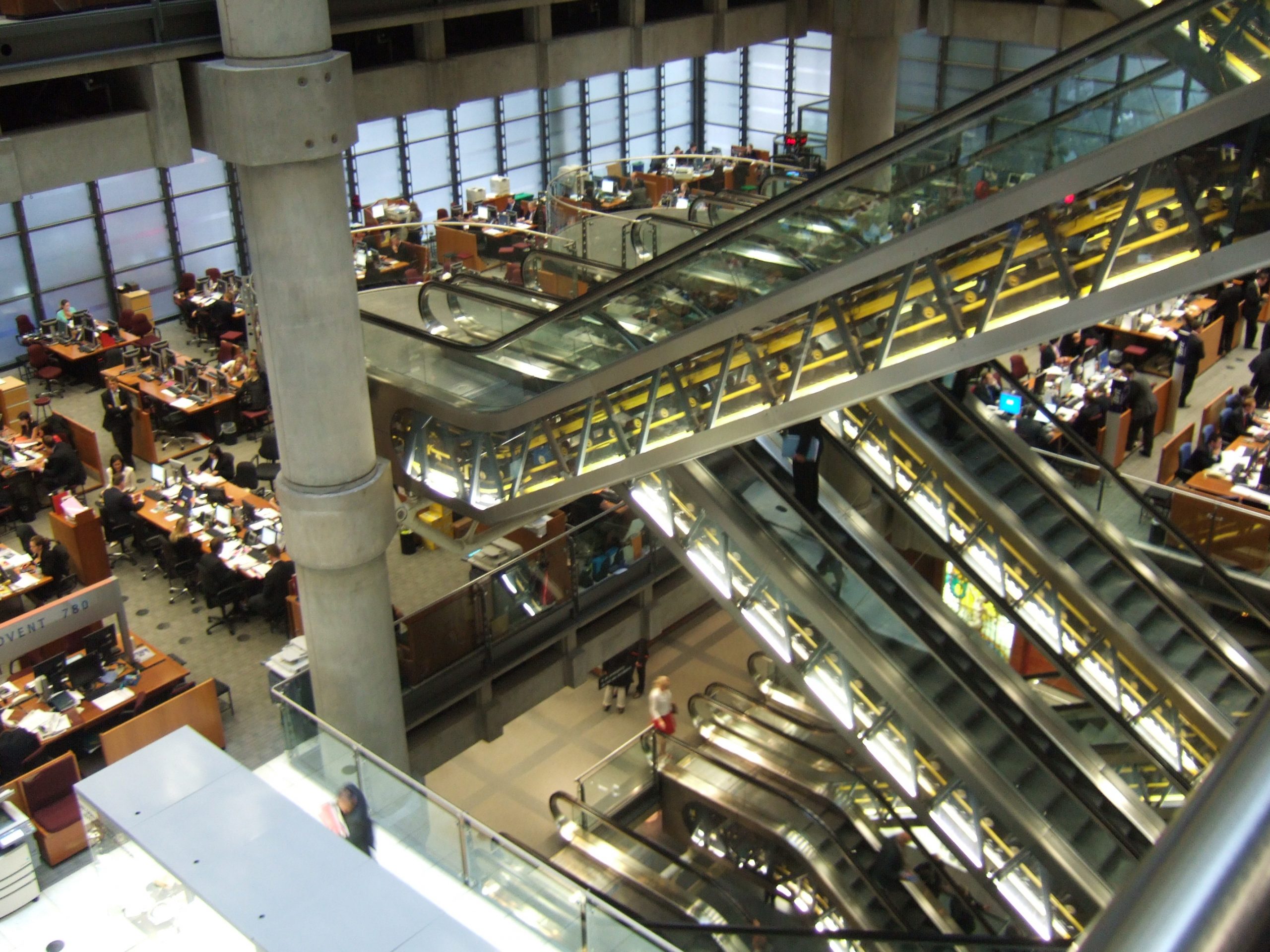
(ロイズの内部、1階(米国、日本式には2階)から地上階(米国、日本式には1階)の海上保険のアンダーライティング・フロアを臨む)
(Interior of Lloyd’s of London, looking from 1st floor (2nd floor in US/Japanese style) to the marine insurance underwriting floor on the ground floor (first floor in US/Japanese style) )
1.ロイズの淵源
英国のロイズ法(Lloyd’s Act, 1982)における正式名称は、ソサイエティ・オブ・ロイズ(Society of Lloyd’s)と呼ばれる、ロイズ評議会(Council of Lloyd’s)によって統治される特殊法人であるが、ほとんどすべての関係者は「Lloyd’s of London」と呼ぶ。直訳すると「ロンドンのロイズ」である。
1600年代末、ロンドン観光の定番スポットであるが、すぐ上流にある民謡「ロンドン橋落ちた」で有名なロンドン橋と誤解されることが多い、開閉式の跳ね橋「タワーブリッジ」の傍ら、タワーストリートに、エドワード・ロイドが、商取引の場所として人気が出始めていたコーヒーハウス(喫茶店)を開いた。その店は、彼の名前を冠して「エドワード・ロイドのコーヒーハウス(Edward Lloyd’s Coffee House)」と呼ばれた。Lloyd’s of Londonの淵源である。
大西洋に注ぎ込むテムズ川の河口沿いにある街がロンドンである。このため多くの海運業者が店に集まり、海事ニュースを発行して有名になった。海運業者、荷主が集まれば、「海上運送リスクをどうするか」が当然、話題の中心となる。保険を引き受ける商人が自然と誕生した。
コーヒーハウスには、保険の引受の検討をするため、「船名、船歴、荷物、船長、航海のスケジュール等々」が描かれたボードが掲げられ、その下に「引き受ける人間」が引受け割合を記し、サインをした。この伝統は今でも、保険証券の下の方にサインすることで受け継がれているが、そのためこの保険を引き受ける人のことを「Underwriter(アンダーライター)」と呼ぶようになったといわれている。
保険のビジネスが大きくなっていくと、もともとはアンダーライターの経営する会社の使用人だった人たちが独立してアンダーライターと保険を掛けたい人たちの間を取り持つ「保険仲介業」をおこなうようになり、彼らのことを「ブローカー」(保険仲立人)と呼ぶようになり、彼らが相互に連携した「保険市場」が店のなかに生まれた。
筆者が長年持っている、昭和60年(1985年)7月18日に発刊された「『ロイズ・オブ・ロンドン: 木村栄一著 日本経済新聞社刊』の初版本」によると、初めて文章に「ロイズ」の名前が顕れたのは、「1688年2月発行の新聞、ガゼット紙」の広告面であった。その広告記事は「盗まれた5つの時計を探して回収したら報酬を与える」旨記されたものであり、また「その情報を持っている人はタワーストリートのロイズ・コーヒーハウスに連絡すること」と記したものであった。これが、歴史上初めて保険業者としての「ロイズ」の名前が現れたものであった。
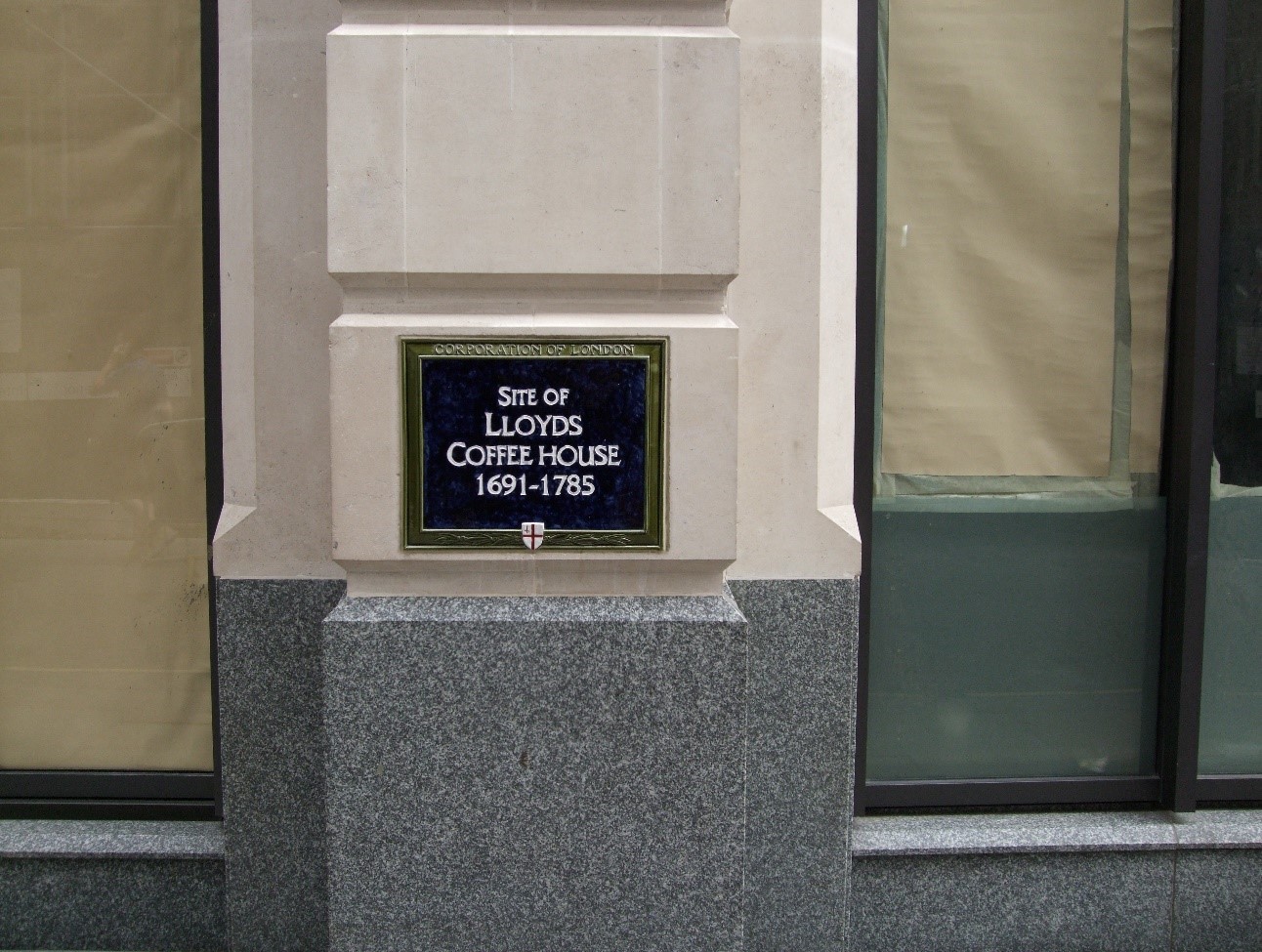
(ロンドンのシティ、「ロンバートストリート16番地」にある、第2代目のロイズ・コーヒーハウスの跡地)
(The site of the second Lloyds Coffee House at “16 Lombard Street”, City of London)
「企業戦略(CS)14 ー ロイズ発展の理由」に記したが、1691年になり、世界の海運情報の収集を目的として、ロイズ・コーヒーハウスは、その当時も、また今もビジネス街の中心地である「ロンバードストリート」の16番地に移転した。理由は、当時すぐ隣にあったのがロンドン中央郵便局であり、世界中の情報が郵便という手段で集まってくる場所に非常に近かったからであった。その後、1700年代になるとロイズは海運保険を独占的に扱う保険業者として大きく成長、1770年代の米国独立戦争では、「海上保険がいかに重要であるか」を実証して、その提供者である海上保険業者に多大な利益とそして時には大きな損失をもたらしつつ、この期間でロイズは世界規模で海上保険を支配するほどの大きな存在になっていった。
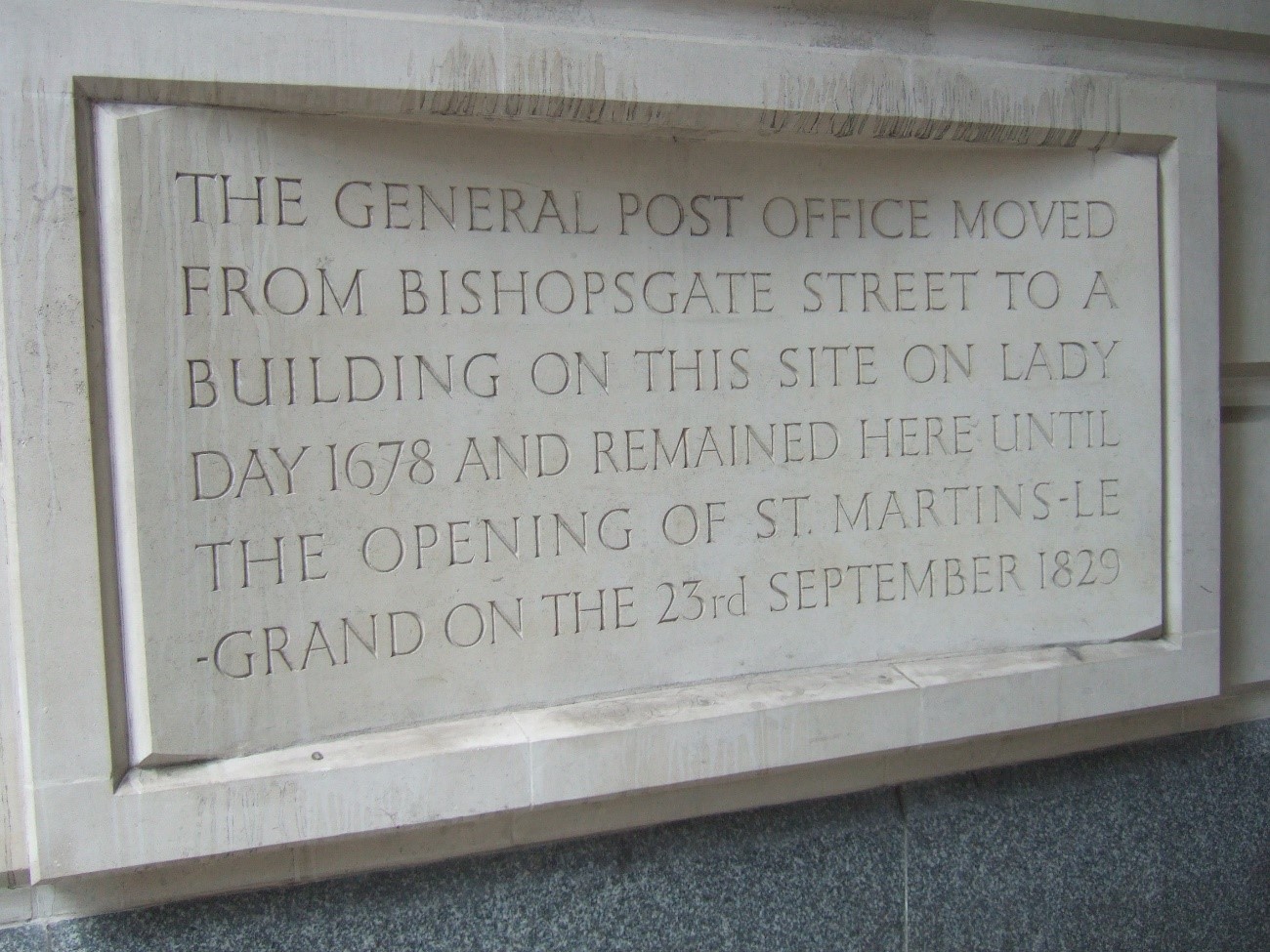
(上記写真「第2代目のロイズ・コーヒーハウスの跡地」の隣の建物の壁面にある、「1678年から1829年まで、ロンドン中央郵便局が在った」との記念の石版)
(A commemorative tablet on the wall of the building next to the “site of the second Lloyd’s Coffee House”, pictured above, states that “From 1678 to 1829 there was the Central Post Office of London”)
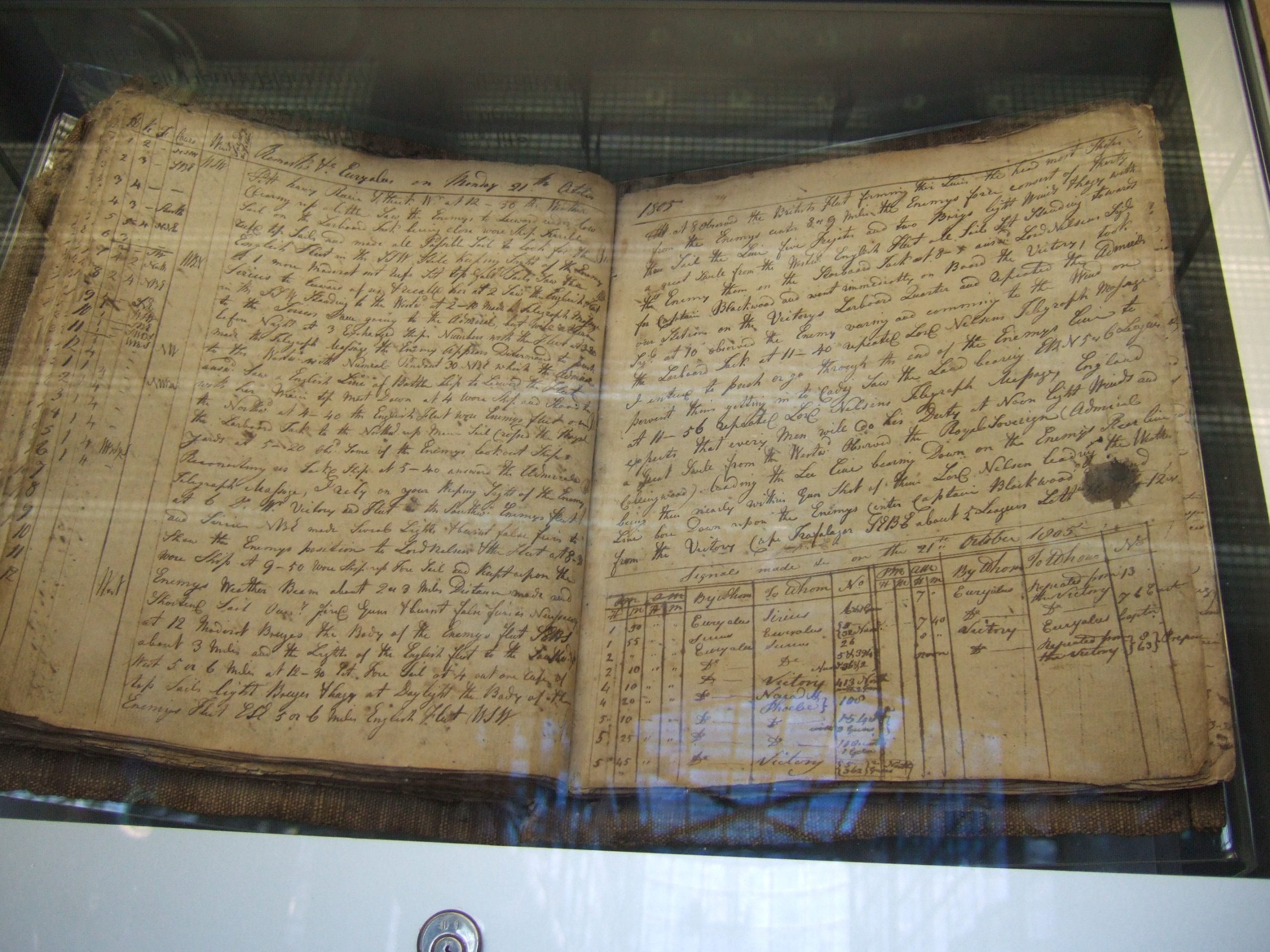
(ロイズの初期の保険契約の明細(保険契約、保険事故、保険金の支払い)
(Lloyd’s of London’s early insurance policy statements (insurance policies, claims and loss)
2.ロイズとは
ロイズ(Lloyd’s of London)のホームページでは、ロイズに関係してビジネスをおこなう人たちを区分して、下記のように記している。
The policyholder(保険契約者):
They could be businesses, organisations, other insurers and individuals from around the world looking to mitigate the impact of potential risks. And it’s not only the everyday risks they’re looking to cover. But also complex and unique ones, like protecting a business from cybercrime or insuring first-of-its-kind technology.
保険契約者は、潜在的なリスクが損害に至る衝撃を緩和しようとしている、企業、組織、また他の保険会社、世界中の人々達になるでしょう。 また、彼らが保険によって補償を得ようとしているものは日常的なリスクだけではありません、サイバー犯罪からビジネスを護る、最先端の技術を保険補償するなど、複雑でユニークなものもあります。The local broker((現地:保険契約者)の国の保険ブローカー):
They are the first contact for a policyholder. They work in the local market where the policyholder is based. They’ll assess the policyholder’s needs and decide if it’s more suitable for the Lloyd’s marketplace.
彼らは、保険契約者の最初の連絡、相談先です。 彼らは、保険契約者が存在する現地の市場で事業をおこなっています。 彼らは、保険契約者のニーズ、意向を評価し、それがロイズの市場で保険の補償を得る方がより良いかどうかを判断します。The Lloyd’s broker(ロイズブローカー):
They work on the policyholder’s behalf, negotiating with underwriters to create a tailored policy to insure the risk.
彼らは、保険契約者の権益を代表して、リスクに対する補償を記したオーダーメイド型の保険証券を創りあげるため、保険引受人(アンダーライター)と交渉する業務をおこなっています。この項には、グローバル・リンクと業務提携しているロイズブローカー、マルニックス(ヨーロッパ)の名前が他のロイズブローカーと合わせて338社(2018年末現在)のうちの1社として下記のように記されている。
Marnix Europe Limited
River Plate House、7-11 Finsbury Circus London United Kingdom EC2M 7AF
Tel: +44 (0)20 7826 8693
Fax: +44 (0)20 7826 8695The underwriter(アンダーライター:保険引受人):
They work with other specialist underwriters and the Lloyd’s broker to draw up the policy. Each underwriter will decide on the price and terms they’re willing to take.
彼らは、他の専門的なアンダーライターやロイズブローカーと連携して保険証券を発行します。それぞれのアンダーライターは、それぞれが保険を引受けるために望む保険料価格と保険の引き受け条件を決定します。The syndicate(シンジケート:保険引受組織):
They are made up of underwriters who group together to form a syndicate to write insurance at Lloyd’s. Underwriters enter into insurance contracts on behalf of Lloyd’s syndicates. Each syndicate is given a number by Lloyd’s to identify them.
彼らは、ロイズで保険証券を発行するためにシンジケートを形成してグループ化したアンダーライター達で構成された組織です。 アンダーライター達は、そのロイズのシンジケートを代表して保険契約の締結をおこないます。 各シンジケートには、ロイズによってそのシンジケートの識別番号が与えられます。シンジケートは2020年末で80あまりのシンジケートが存在している。
The managing agent(マネージングエージェント:シンジケート保有管理会社):
They are a company set up to manage one or more syndicates. Managing agents are responsible for employing the underwriters.
彼らは、1つもしくはそれ以上の数のシンジケートを管理するために設立された会社です。 マネージングエージェントは、アンダーライター達を雇用する責任があります。
上記の「登場人物」のなかで、The Lloyd’s broker(ロイズブローカー)とThe underwriter(アンダーライター)が保険の取引をする場所、「保険取引所」がロイズである。したがって、ロイズブローカーに「ロイズとは?」と聞くと、みなすべてが「マーケット:市場」と答える、その場所がロイズ(Lloyd’s of London)である。
3.ルーティン・ベル
ロイズを説明するときに外せない言葉に「ルーティン・ベル」がある。ロイズビルのGround floor(地上階)に置かれている。「ロイズにとって、悪いニュースがあったときには1回、良いニュースがあったときには2回鳴らされる、「ロイズを象徴するベル」のことである。
1805年トラファルガーの海戦においてネルソン提督率いる英国が仏ナポレオン軍に打勝ち、仏ナポレオン海軍のフリゲート艦、La Lutine(ラ・ルーティン)を拿捕してHMS Lutine(ルーティン)と改名、英国海軍に加えたが、25年後この船が沈没した。この時、その船舶・貨物の保険を引き受けていたのは当然ロイズであり、保険金の支払額は百万ポンドだったといわれている。これは、現在の価値では8000万ポンドに相当、円貨に換算すると100億円を超す金額となる。
ロイズは、回収のためこの船の引き上げに手を尽くすが成功せず、80年後の1859年、ようやく成功、その引き上げられたサルベージ品(遭難船からの引き上げ品)のなかで、「最も重要な品」とされたのが船の鐘、それがロイズに運び込まれ、以来ロイズを象徴するものとして、今に至るまで、ロイズの保険引受場所(アンダーライティング・ルーム)の中心に置かれている。
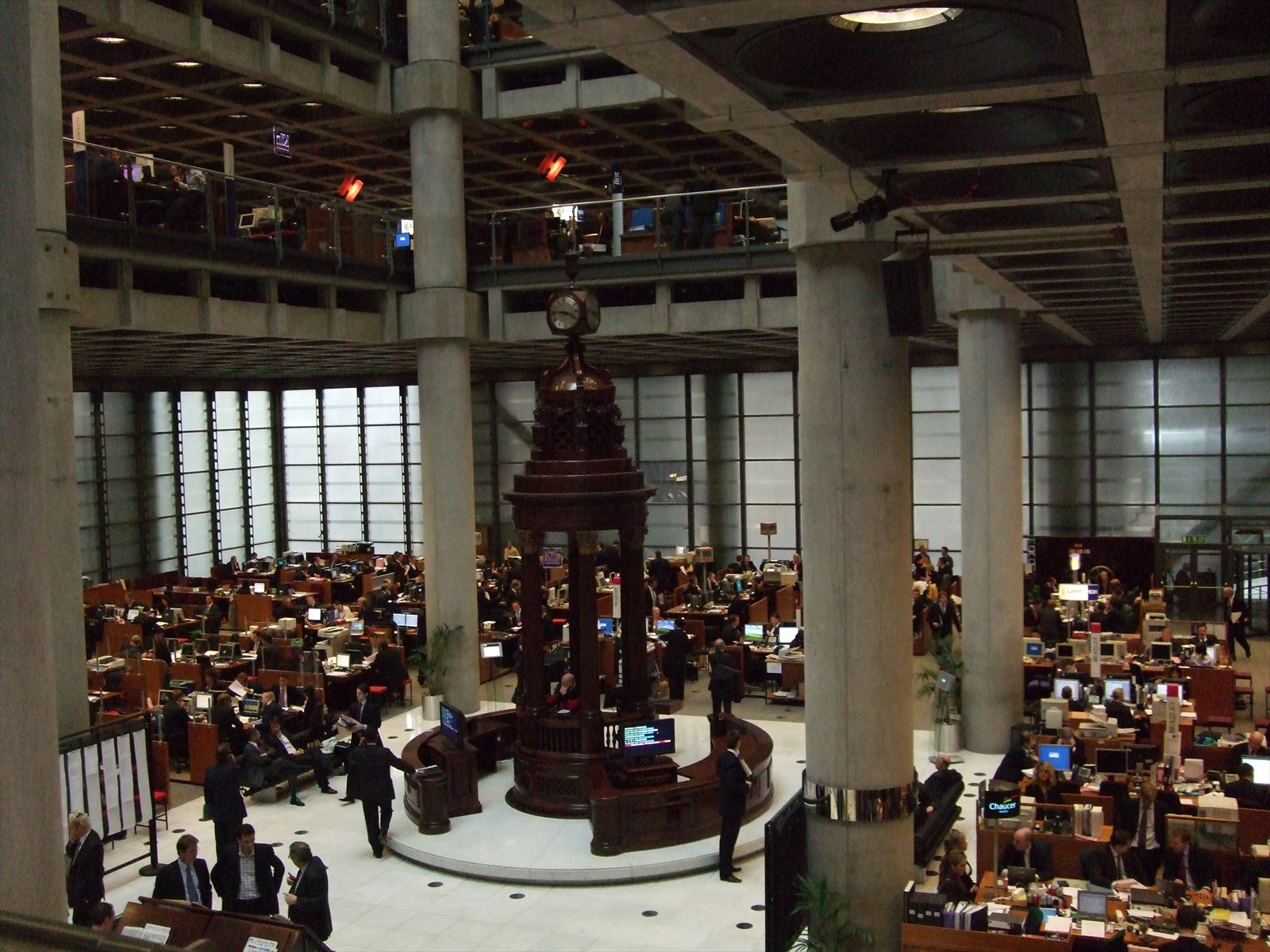
(ロイズビルの地上階にある「ルーティン・ベル」)
(The Lutine Bell, on the ground floor of the Lloyd’s building)
4.ロイズにおけるキャプティブ設立計画
このロイズがキャプティブの設立地(ドミサイル)としての役割を再スタートさせようとしている。ロイズがキャプティブの設立地(ドミサイル)となった場合には、ロンドンにその場所を置くこともできるが、またロイズが認可を受けている全世界70を超える国・地域に置くこともできる。
ロイズは、20年前、1999年に「キャプティブの設立地(ドミサイル)」となり、国際的な巨大製薬会社SmithKline Beecham P.L.C(スミスクラインビーチャム)がキャプティブをロイズに設立した。しかしながら、その後、どの企業もこの動きを追随しなかったため、2001年6月そのキャプティブを清算した経緯がある。今回の「キャプティブの設立地(ドミサイル)の役割」の再始動には、ロイズが全世界に持つ「グローバルライセンス(保険業の許可)」にアクセスできるという利点があり、ロンドンではこの動きが「ロイズの未来設計図」として注目されている。
5.バーチャル・アンダーライティング・ルーム
ロイズに於けるビジネスの主軸は、上の写真のように、「保険を引受けて欲しい顧客」の要望を受けたブローカーが、重たい書類を手にロイズのアンダーライティング・ルームの「ボックス」にいるアンダーライターを訪問して、保険の取引をおこうなことであり、これが300年間行なわれてきた。
そのロイズが、インターネットを介した「バーチャル・アンダーライティング・ルーム」の構築を急いでいる。今年2021年1月27日発表されたロイズの発表によると、コロナ禍を受け昨年9月、米国の不動産に関わる保険に関して、ブローカーとアンダーライターがオンラインで接続、開始した「バーチャル・アンダーライティング・ルーム」を英国に所在するあらゆる保険の対象物・事案に拡大することを目指して急ピッチでそのプロジェクトが進んでいる模様である。
現在約140名が利用しているこのシステム、そのユーザーからのフィードバックを受け開発したバーチャル・アンダーライティング・ルーム内での会議予約・管理機能、またユーザー自身のカレンダーと同期してバーチャル・アンダーライティング・ルーム内のアンダーライターの空き状況を自動的に表示する機能などが含まれた新機能の導入が予定されている。また、音声通話やビデオ通話機能を導入し、すべてのコミュニケーションをバーチャル・アンダーライティング・ルームのプラットフォーム内で行えるようにする予定であり、「ロイズで300年間続いてきた対面取引」がインターネットを介して行なう方向に大きく舵をきられている。
グローバル・リンクは、昨年春の「緊急事態宣言」以降、すべてのビジネスは「オンライン会議システム」で現在もおこなっている。その利便性が際立っているからである。昨年2020年12月には、歴年度中に必ず行なわなければならない「キャプティブの株主総会」を、キャプティブを設立した「親会社」の地と、ハワイ(キャプティブ・マネージャー事務所、弁護士事務所)、そしてグローバル・リンクのスタッフの自宅サテライトオフィスを繋いで成功裏におこなうことができた。
これらの事からも、コロナ禍が落ち着いても、その効用を考えると「オンライン」が事業推進の核になると感じている。電話が発明される前は、手紙、また面談しかコミュニケーションの方法は無かった。そして、多くのことを電話でビジネスを進めることが「当たり前」となる時代があり、それがこの20年間で「メール」に代わり、また「全てがオンラインに進化しつつある過程」が今ではないかと感じている。ロイズの変化はそれを物語っているのではないだろうか。
今回のまとめ
昨年2020年3月、第二次世界大戦以降初めて「アンダーライティング・ルーム(保険引受室)」を閉鎖した「ロイズ(Lloyd’s of London)」は、9月10日、新型コロナのパンデミックによる保険金請求の予想額を、5月に発表した予想額43億ポンド(約4,500億円)から最大で50億ポンド(約6,800億円)に引き上げる旨、そしてこの支払いのうち20億ポンド(約2,700億円)をロイズが掛けている再保険から回収する見込み補う予定だと声明で発表した。
しかし、その後、その金額は大幅に増加、11月カーネギー・ブラウン会長は「2017年3つの大西洋ハリケーンが1440億ドル(約1兆5千億円)の保険金支払いをもたらした2017年と同程度以上になるだろう」と保険の国際会議の席上発表した。
300年を超える歴史を誇り「保険の殿堂」とも称される「ロイズ(Lloyd’s of London)」をもこのように大きな損害を与えているコロナのパンデミック。だが、キャプティブに再度注目してその事業を再始動させようとしているのである。
このことをどう捉えていくのか。キャプティブが持つ優れた点に、世界のロイズが再注目しているということである。日本企業も取り組んでいくべき「企業戦略の近未来図」をロイズが指し示してくれているということであり、いまこそ本格的なリスクマネジメントをおこない、キャプティブ設立の検討に入る好機ではないだろうか。
執筆・翻訳者:羽谷 信一郎
English Translation
Captive 23ーCaptives to be established at Lloyd’s of London
I have the thick “2018 Annual Report” at hand. On its cover it says “Annual Report 2018 Sharing risk to create a braver world”. The name of the sender of the accompanying letter is “Bruce Carnegie-Brown”. He is the 63rd Chairman of Lloyd’s of London and he sent it to all concerned in May 2019.
1. The source of Lloyd’s of London
The official name in the UK Lloyd’s Act (Lloyd’s Act, 1982) is the Society of Lloyd’s, a special corporation governed by the Council of Lloyd’s, but almost all parties involved call “Lloyd’s of London”. The literal translation is “Lloyd’s of London”.
At the end of the 1600s, Edward Lloyd opened a coffee house (a coffee shop) that was becoming popular as a place to do business in Tower Street beside Tower Bridge, a retractable drawbridge that is often misunderstood, as a staple of London tourism, but is just upstream from the famous London Bridge, famous for the folk song “London Bridge Fell Down”. It was called “Edward Lloyd’s Coffee House” after him, the source of Lloyd’s of London.
London is a city located at the mouth of the Thames, which empties into the Atlantic Ocean. This is why so many shipping companies gather in his shop and have become famous for publishing the Maritime News. When shipping agents and shippers meet, the topic of discussion is naturally “what to do about the risks of carriage by sea”. A merchant who underwrote insurance was naturally born.
A board with the name of the ship, its history, its cargo, the captain, the schedule of the voyage, etc., was put up in the coffee house for consideration of insurance, and underneath the board, the “person who underwrites” wrote and signed the percentage of insurance. This tradition is still carried on today by signing at the bottom of the insurance policy, which is why the person who underwrites the insurance is said to have come to be called an “underwriter”.
As the insurance business grew, people who were originally servants of the underwriters’ companies became independent “insurance intermediary” who acted as an intermediary between the underwriters and those who wanted to insure them and they came to be known as ”brokers” (insurance brokers) and their interconnected ”insurance market’ ”was born in his shop.
According to the first edition of “Lloyd’s of London: Eiichi Kimura, published by Nihon Keizai Shimbun” on July 18, 1985, which I have had for many years.The first time the name “Lloyd’s” appeared in print was on the front page of an advertisement in “The Gazette, a newspaper published in February 1688”. The advertisement stated that a reward would be offered for the search and recovery of five stolen watches and that “anyone with information should contact Lloyd’s Coffee House in Tower Street”. This was the first time in history that the name “Lloyds” appeared as an insurer.
As noted in ”Corporate Strategy (CS) 14 – Reasons for the development of Lloyd’s of London”, in 1691, Lloyds Coffee House moved to 16 Lombard Street, then and now in the heart of the business district, with the aim of gathering information on the world’s shipping. The reason for this was that the London Central Post Office was right next door at the time, very close to where information from all over the world was gathered by post. Subsequently, in the 1700s, Lloyd’s of London grew significantly as a monopoly insurer of maritime insurance, and in the American Revolutionary War of the 1770s, Lloyd’s of London demonstrated “how important marine insurance was”, bringing huge profits and sometimes heavy losses to the marine insurers who provided it, while in this period It became so large that it dominated marine insurance on a global scale.
2. What is Lloyd’s of London?
On the Lloyd’s of London website, the following categories of people are listed for those doing business with Lloyd’s
The policyholder:
They could be businesses, organisations, other insurers and individuals from around the world looking to mitigate the impact of potential risks. And it’s not only the everyday risks they’re looking to cover. But also complex and unique ones, like protecting a business from cybercrime or insuring first-of-its-kind technology.
The local broker:
They are the first contact for a policyholder. They work in the local market where the policyholder is based. They’ll assess the policyholder’s needs and decide if it’s more suitable for the Lloyd’s marketplace.
The Lloyd’s broker:
They work on the policyholder’s behalf, negotiating with underwriters to create a tailored policy to insure the risk.
In this section, the Lloyd’s broker Marnix (Europe), which is in business partnerships with Global Link, is listed as one of 338 Lloyd’s brokers (at the end of 2018) including other Lloyd’s brokers, as follows
Marnix Europe Limited
River Plate House, 7-11 Finsbury Circus, London United Kingdom EC2M 7AF
Tel: +44 (0)20 7826 8693
Fax: +44 (0)20 7826 8695
The underwriter:
They work with other specialist underwriters and the Lloyd’s broker to draw up the policy. Each underwriter will decide on the price and terms they’re willing to take.
The syndicate (insurance underwriting organisation):
They are made up of a group of underwriters who together form a syndicate to write insurance at Lloyd’s. Underwriters enter into insurance contracts on behalf of Lloyd’s syndicates. each syndicate is given a number by Lloyd’s to identify them.
There were 80 or so syndicates in existence at the end of 2020.
The managing agent (syndicate holding and management company):
They are a company set up to manage one or more syndicates. Managing agents are responsible for employing the underwriters.
In the “characters” above, Lloyd’s is the place where The Lloyd’s broker and The underwriter trade insurance, the “insurance exchange”. Therefore, if you ask The Lloyd’s broker “What is Lloyd’s? “, they all say “the market”, and that place is Lloyd’s of London.
3. Lutine Bell
A word that cannot be left out when describing Lloyd’s of London is “Routine Bell”. It is located on the ground floor of the Lloyd’s building. It is the “symbolic bell” that is rung once for bad news and twice for good news for Lloyd’s of London.
At the Battle of Trafalgar in 1805, the British, under Admiral Nelson, defeated the French Napoleon’s forces and captured the French Napoleonic Navy frigate “La Lutine”, renamed it “HMS Lutine”, and added it to the Royal Navy, but 25 years later the ship sank. It was Lloyd’s of London, of course, who insured the ship and its cargo, and it is said to have paid out £1 million in claims. This is equivalent to £80 million in today’s value, or over 10 billion in yen.
Lloyd’s tried without success to salvage the ship, but finally succeeded, 80 years later, in 1859, and of the salvaged items, the ship’s bell, which was deemed the “most important item” among the salvaged goods (salvaged from the ship in distress), was brought to Lloyd’s of London and has been a symbol of Lloyd’s of London ever since, sitting at the centre of the Lloyd’s of London underwriting room.
4. Plan to establish a captive at Lloyd’s of London
The Lloyd’s of London is about to re-launch its role as the captive’s establishment site (domicile). If Lloyd’s of London becomes the captive’s founding site (domicile), it could be located in London, or in one of the more than 70 countries or territories worldwide where Lloyd’s of London is authorised to operate.
Lloyd’s of London became the “founding site (domicile) of the captive” more than 20 years ago, in 1999, when the international pharmaceutical giant SmithKline Beecham P.L.C established the captive at Lloyd’s of London. However, none of the companies followed suit and the captive was wound up in June 2001. This re-launch of the “captive’s establishment (domicile) role” has the advantage of access to Lloyd’s of London global licence to operate insurance, and the move is being seen in London as a “blueprint for the future of Lloyd’s of London”.
5. Virtual Underwriting Room
The mainstay of the business at Lloyd’s of London is the broker who receives a request from a client for an insurance policy and visits the underwriter at a ”Box” in the underwriting room at Lloyd’s of London with heavy documents in hand, as shown in the picture above. This is how it has been done for 300 years.
Lloyd’s of London is now rushing to create a “Virtual Underwriting Room” via the internet. Lloyd’s of London announced on 27th January 2021 that it is rapidly expanding its Virtual Underwriting Room, which was launched in September last year in response to covid-19 disaster to connect brokers and underwriters online for insurance on US property, to cover all insured risks in the UK.
The system, which is currently used by around 140 people, has been developed in response to feedback from users, and includes the ability to book and manage meetings within the Virtual Underwriting Room, and to automatically display the availability of underwriters in the Virtual Underwriting Room by synchronising it with users’ own calendars. It will also introduce voice and video calling capabilities, allowing all communication to take place within the Virtual Underwriting Room platform, marking a major shift in the direction of “300 years of face-to-face trading at Lloyd’s of London” over the internet.
It will also introduce voice and video calling capabilities, allowing all communication to take place within the Virtual Underwriting Room platform, marking a major shift in the direction of 300 years of face-to-face trading at Lloyd’s over the internet.
Since declaring a state of emergency last spring, Global Link still conducts all of its business via an online conference system. This is because it is so convenient. Last December 2020, we successfully held the annual meeting of a captive shareholders in Hawaii (captive manager’s office, legal counsel’s office) and Global Link staff’s satellite office at home.
All of this suggests that even after the Corona disaster has settled down, “online” will still be at the core of our business promotion, given its benefits. Before the invention of the telephone, the only way to communicate was by letter or in person. There was a time when it was “normal” to do a lot of business over the phone, but in the last 20 years, email has replaced it and we are now in the process of evolving everything online. I think the changes at Lloyd’s of London are testament to this.
Summary of this issue
Lloyd’s of London said in a statement on 10 September 2020 that it had raised its forecast for claims from covid-19 (the new corona) pandemic to a maximum of £5 billion, up from the £4.3 billion it announced in May, and that it expects to cover £2 billion of the payment from Lloyd’s reinsurance policies.
However, the amount has since increased significantly, and in November Chairman Carnegie Brown announced at the International Conference on Insurance that ” the pandemic-induced losses will be on a par with 2017, when three Atlantic hurricanes contributed to a catastrophe bill of $144 billion, the highest ever catastrophe bill on record.”
The covid-19 (new corona) pandemic that has caused such significant damage to Lloyd’s of London, which has a history of over 300 years and is known as the “Insurance Hall of Fame”. But they are trying to re-focus their attention on the captive and relaunch that business.
How will this be captured? It means that Lloyd’s of the world is paying renewed attention to the advantages of captives. The fact that Lloyd’s of London is pointing to a “near-future picture of corporate strategy” that Japanese companies should also be working on means that now is an opportune time to engage in full-scale risk management and start considering the establishment of a captive.
Author/translator: Shinichiro Hatani

